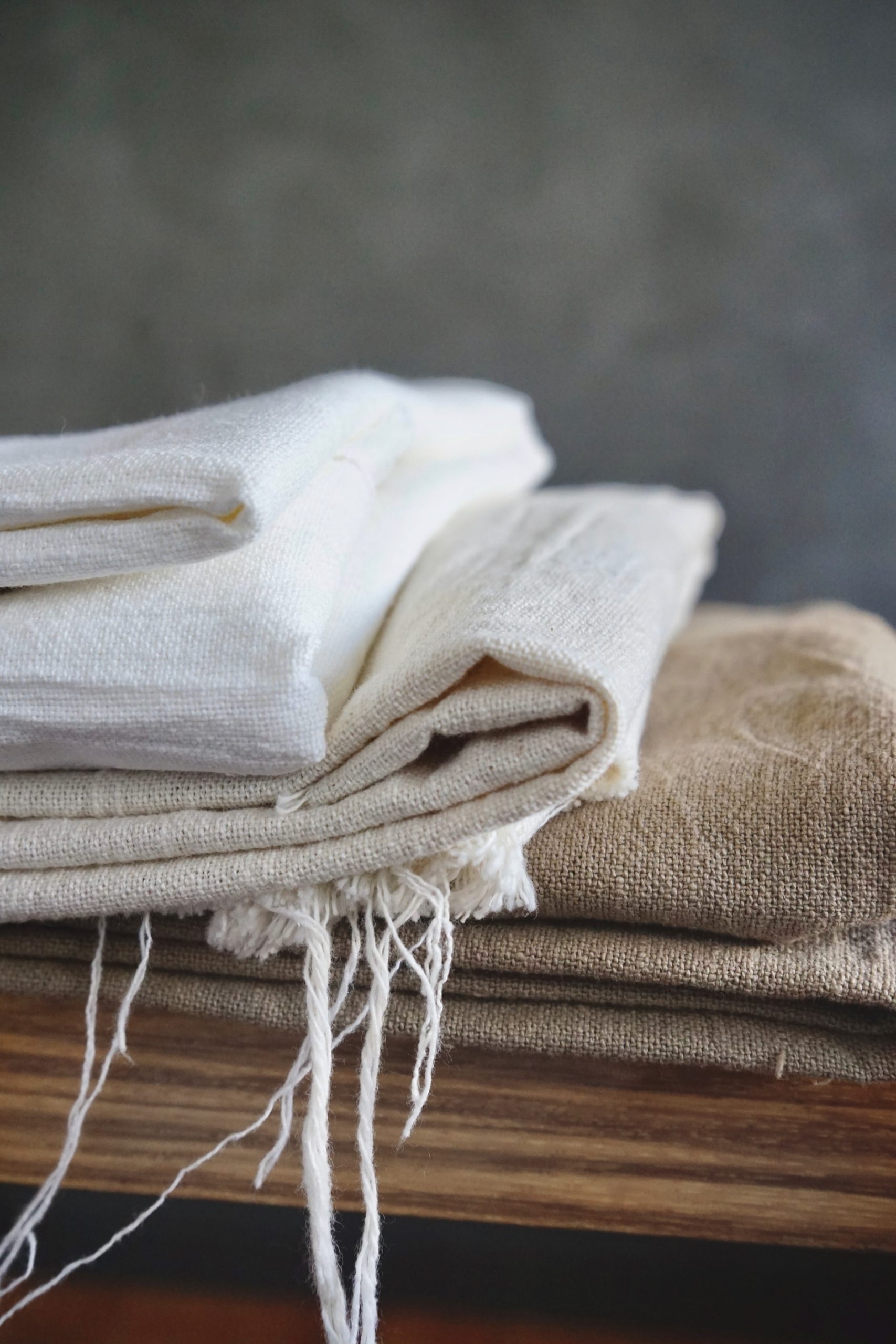
Linen products are very popular in modern interiors and can be used to complement any design style or theme that you might have going on in your home. But, as with any other fabric, linen can get stained if you don’t treat it right, and when you keep it too long it will start to get ratty and worn out. In order to keep your linen fresh and spotless, it’s best to follow these simple rules of how to take care of linen products properly.
Linen is a natural fibre that’s grown from flax plants. It’s very durable and, according to experts, has some surprising benefits. Not only is it hypoallergenic (and therefore doesn’t trigger allergies), but it also can absorb over twenty times its weight and feels silky smooth against the skin. The best part? These benefits can be seen when you buy bedsheets or other linens, meaning that you can use them all day long or even sleep on them without worrying about any adverse reactions. If you think you want to experience these benefits yourself, follow our advice below.
Linen cushion covers and other products made from linen need special care. They should be dry-cleaned and starched after each washing. Linen cannot be bleached, so you should not leave linens in direct sunlight, overheat them or use detergents that contain bleach or fabric softeners. You can reduce wrinkles by placing a hot iron over it or smooth it with your hands on a cool ironing board (not on hot). However, too much pressing may cause creases which are difficult to remove completely, especially when laundered later. Be careful not to stretch or pull linens because they will get long-lasting creases that can’t be removed completely.
There are no one-size-fits-all washing instructions for every type of fabric. There are, however, a few things you should keep in mind before tossing those dirty clothes in the wash. a smart way to get rid of wrinkles before washing linens is to hang them on a towel hanger for 5-10 minutes before starting a cycle. Then, try using bleach without a doubt. This can be used with 100% cotton sheets, as they will stain easily and the bleach will make them fresh-looking for longer. As well, wash at lower temperatures (40 °C/104 °F) and make sure there is enough room between items during the spin cycle. Fabrics should not get caught up in one another during the cycle. To save your clothes and the machine, it’s best to use gentler settings such as gentle spin cycles.
Linen is absorbent, so it is a good material for cleaning. But, as with all fabrics, it must be completely dry before you fold and put it away. Wet fabric can lead to the growth of mould, especially if it is stored in a wet area like a basement or an attic. To avoid mildew, hang your linens on hangers and allow them time to air dry. Towels are a notorious medium for mould, and are most often not hygienic enough to rely on as a drying rack. One surefire way to tell if a fabric is dry is to release all the steam in the material and check. When it’s cool and is firmer, it’s ready for storage.
Always keep your linens neatly folded away from things like light, heat, moisture, and household chemicals. Those are things that will damage your linens over time if they’re stored close to them. Instead of folding them and crushing the creases, hang them in a way that keeps them wrinkle-free. Flannel sheets can be hung up at night. Hang up flannel sheets after each use to avoid shrinkage and excessive pilling. Keep the dryer as clear as possible to avoid overloading. Too much laundry put in one dryer can ruin even the highest quality bedsheets because too much heat can cause fibres to weaken and break down.
One thing you don’t have to worry about is having enough items. Linen is a classic, always-fashionable fabric that’s appropriate for nearly any occasion. With such a wide variety of sizes and types of linens, there will always be something available when you need it. Just remember: In order to keep those linens looking their best, they require regular cleaning and proper storage. Make sure to pay attention when laundering them and store them properly so they stay as pristine as possible! Happy cleaning!
main photo: unsplash.com/Maite Oñate